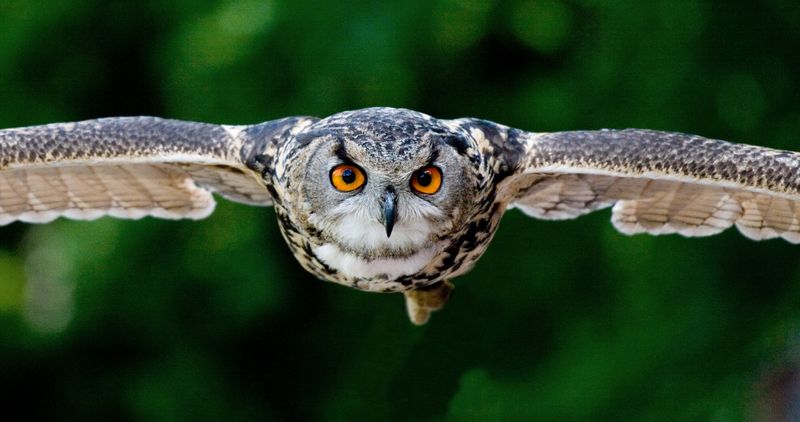Coshocton County’s Bobcat Comeback: A Symbol of Conservation Success
A Promising Comeback
Coshocton County, located in Ohio, is witnessing a remarkable resurgence of bobcats, a species that was once extinct in the state. The revival of these elusive creatures is the result of years of dedicated research and conservation efforts led by Shauna Weyrauch, a senior lecturer at Ohio State University at Newark. Weyrauch’s initiative, known as Project Wild Coshocton, began in 2015 with the aim of studying and monitoring the bobcat population in the county.
According to a survey conducted by the Ohio Department of Natural Resources in 2015, Ohio was estimated to be home to approximately 450 bobcats. Coshocton County, with its expansive forests and natural habitats, emerged as an ideal location for the study. Weyrauch’s team deployed a network of trail cameras, resulting in the collection of over a million photos and some video footage. These images have provided invaluable insights into the behavior and abundance of not just bobcats, but also other carnivores like coyotes.
The project’s findings reveal that Coshocton County may harbor up to 65 bobcats, with about half of the county’s land considered suitable habitat. This resurgence can be attributed to the bobcats’ migration from neighboring states, such as Pennsylvania, West Virginia, and Kentucky, highlighting the interconnectedness of wildlife populations and the need for regional conservation efforts.
Understanding the Ecological Significance
The resurgence of bobcats in Ohio is not only a cause for celebration but also a reminder of the crucial role predators play in maintaining ecological balance. Historically, the state was home to an array of apex predators, including mountain lions, lynxes, and black bears. However, their populations were decimated by the fur trade and other human activities in the 19th century.
Weyrauch emphasizes the importance of predators in regulating prey populations and preventing ecological imbalances. Prior to the decline of predators, the unchecked growth of herbivores, such as deer and rabbits, led to detrimental effects on the ecosystem. Excessive browsing disrupted plant communities, reduced nesting habitats for birds, and contributed to soil erosion along riverbanks. Additionally, the absence of natural predators allowed mesopredators like raccoons and opossums to thrive, further disrupting the delicate ecological equilibrium.
The recognition of these trophic cascades, or the ripple effects caused by the loss of predators, prompted a shift in public perception. Predators such as bobcats and coyotes began to be appreciated for their role in maintaining a healthy and functioning ecosystem. This newfound appreciation has led to a renewed focus on their conservation and coexistence with humans.
Bobcats and Coyotes: Unlikely Neighbors
As part of Project Wild Coshocton, Weyrauch’s team has delved into the complex interactions between bobcats and coyotes in shared habitats. While historical research suggested that these two species might be antagonistic towards each other, Weyrauch’s findings challenge this assumption. She hypothesizes that in environments with an abundance of resources, bobcats and coyotes are more likely to coexist peacefully, as they do not need to compete for limited food, water, and shelter.
By placing deer carcasses as bait and observing the interactions recorded on the trail cameras, Weyrauch’s team has been able to study the behavior and dynamics between bobcats, coyotes, and other scavengers like raccoons and birds of prey. Notably, their observations indicate that coyotes, being a non-native species in Ohio, may not pose a significant threat to the successful reestablishment of the bobcat population. Rather, the provision of ample resources appears to alleviate potential conflicts between these predators.
Conservation Beyond Coshocton County
Building upon the success of Project Wild Coshocton, the initiative has expanded its scope to include neighboring Licking County. The establishment of bobcat dens in this region aims to encourage bobcat presence and determine if the species can be successfully reintroduced. Although other animals, such as raccoons and groundhogs, have utilized the dens, no bobcats have been observed yet. However, the project’s researchers remain hopeful and plan to construct additional dens if evidence of bobcat usage is found.
This expansion underscores the importance of taking a regional approach to conservation. Protecting and preserving habitat corridors that allow for the movement of wildlife is crucial for maintaining genetic diversity and ensuring the long-term survival of species. By extending their efforts to Licking County, Weyrauch and her team are not only contributing to the recovery of bobcat populations but also fostering a greater understanding of the implications of human-wildlife interactions.
Conclusion: A Testament to Conservation
The bobcat resurgence in Ohio, particularly in Coshocton County, serves as a testament to the power of dedicated conservation efforts. Through Project Wild Coshocton, Shauna Weyrauch and her team have shed light on the behavior, population trends, and ecological significance of bobcats and other predators in the region. Their research challenges outdated assumptions, encourages a more nuanced understanding of wildlife interactions, and emphasizes the need for continued conservation efforts.
As Ohio’s bobcat population continues to recover, it is essential for policymakers, landowners, and communities to recognize the value of these charismatic animals and their role in maintaining healthy ecosystems. By prioritizing habitat conservation, promoting coexistence with wildlife, and supporting ongoing research initiatives like Project Wild Coshocton, Ohio can ensure a brighter future for not only bobcats but also the diverse array of species that call the state home.
For more information and the latest updates on Project Wild Coshocton, please visit the project’s official website at u.osu.edu/wildcoshocton.

<< photo by Pixabay >>
The image is for illustrative purposes only and does not depict the actual situation.
You might want to read !
- “The Ultimate Guide to Choosing Your First Class in Baldur’s Gate 3”
- Breaking Barriers: The Clash that Silenced Arielle Free on Radio 1
- Costa Coffee Stands Firm: Defending Equality and Inclusion with Post-Op Trans Man Mural
- “Unbearably Improbable: Chinese Zoo Rejects Claims of Sun Bears in Human Disguise”
- Hangzhou Zoo’s Real Sun Bears: Dispelling the Rumors of Human Disguises
- Georgie Grier’s Edinburgh Fringe Show Becomes a Sold-Out Sensation
- Georgie Grier’s Edinburgh Fringe Show Takes the Stage by Storm, Selling Out in Record Time
- Unraveling the Enigma: Shedding Light on Celine Dion’s Battle with Stiff Person Syndrome
- “Unleashing the Unbelievable: Exploring the Thrills of Wolf”
- BBC Springwatch Star Chris Packham Calls Police and Issues Warning: Protecting Wildlife from Threats
- Gored by a Bison: A Love Story of Survival in Yellowstone National Park
- Exploring the Diverse Mustelid Species and Their UK Habitats




